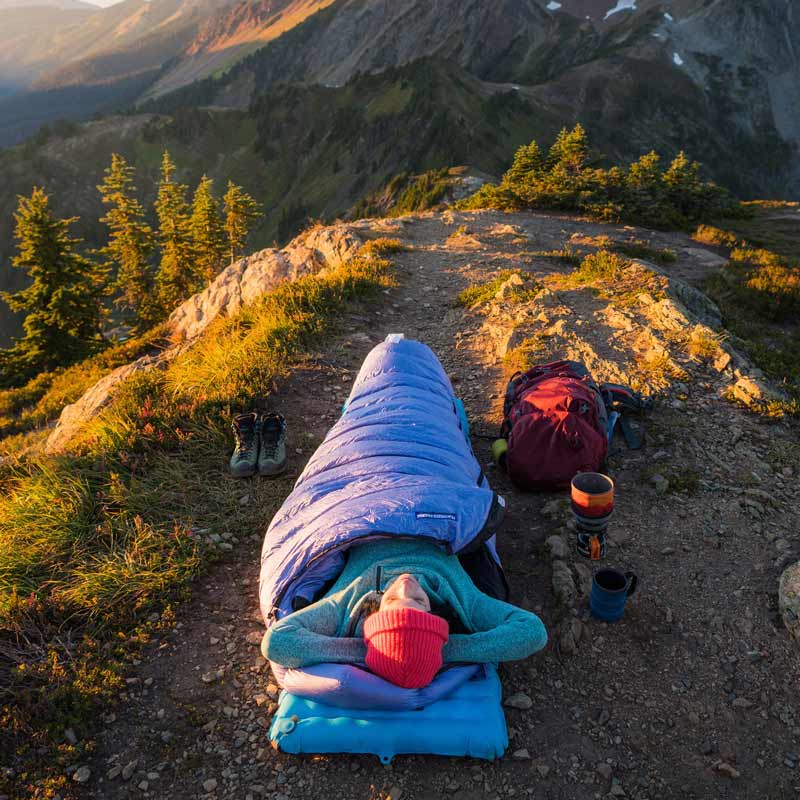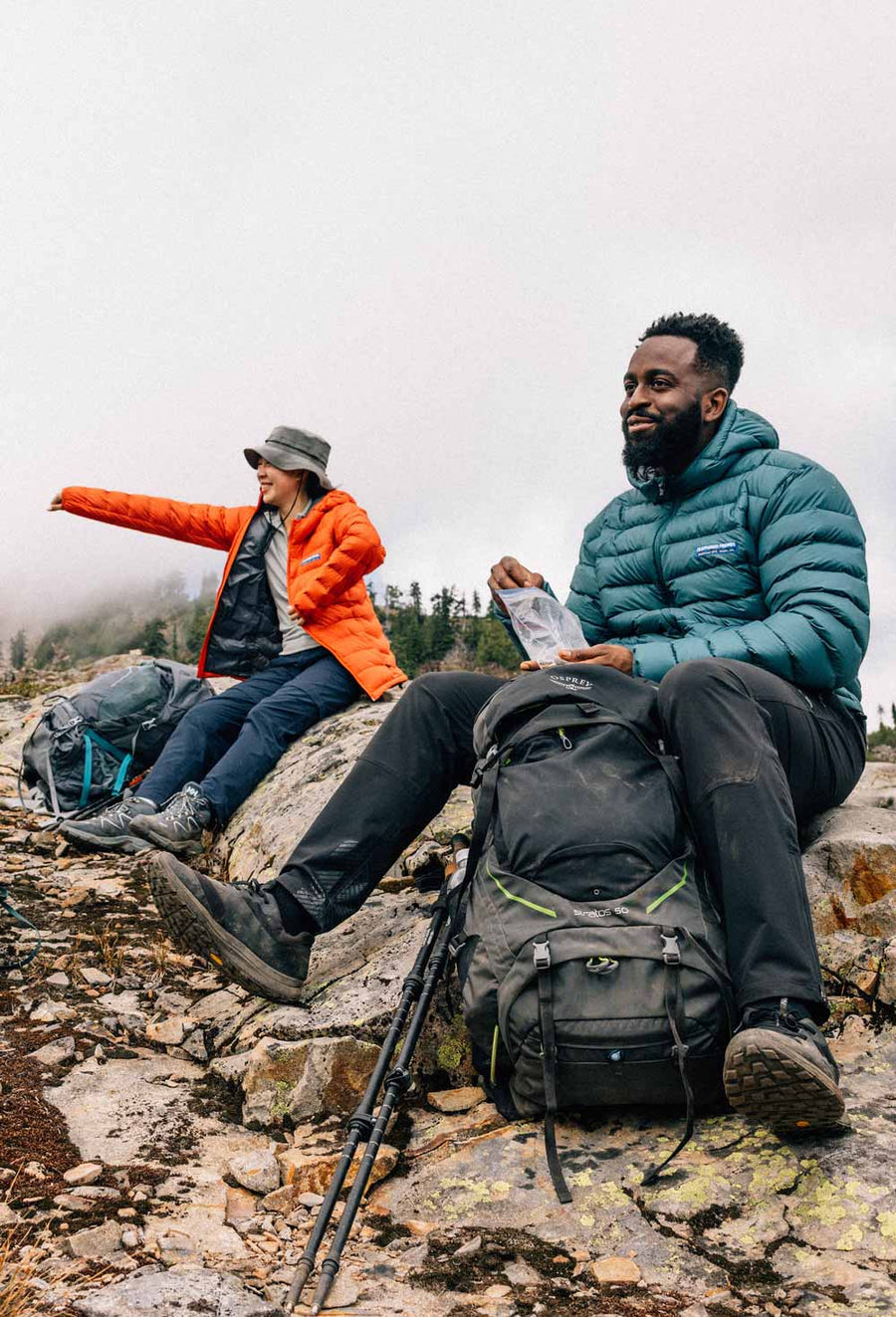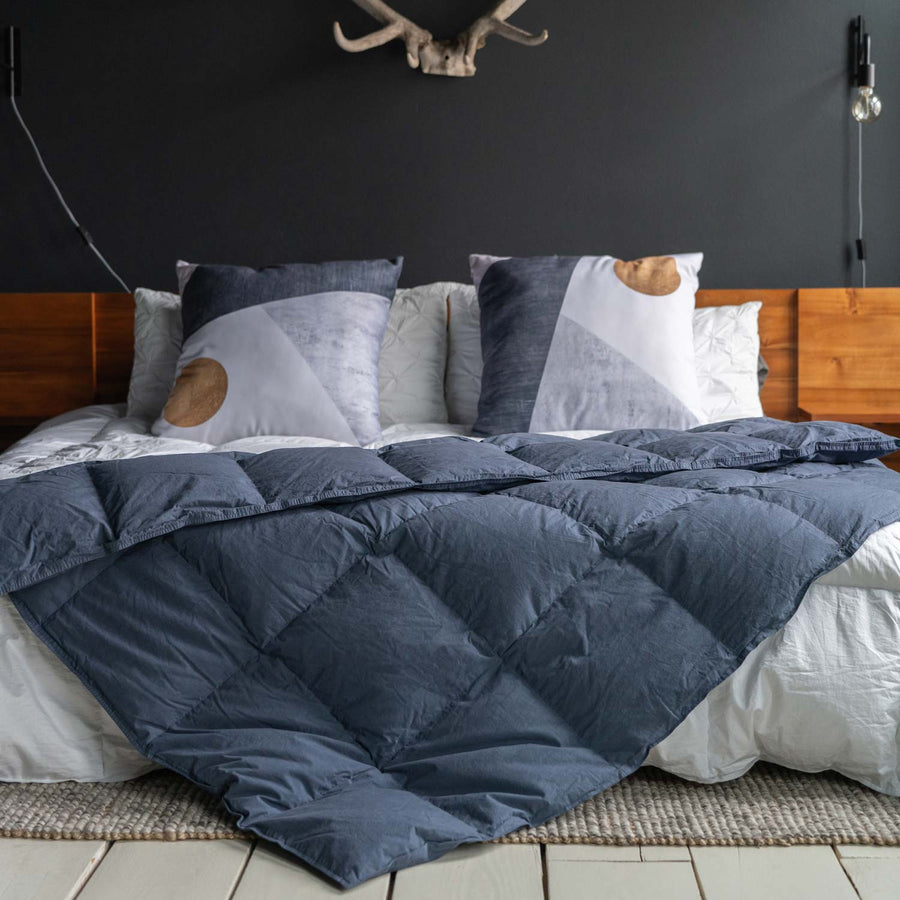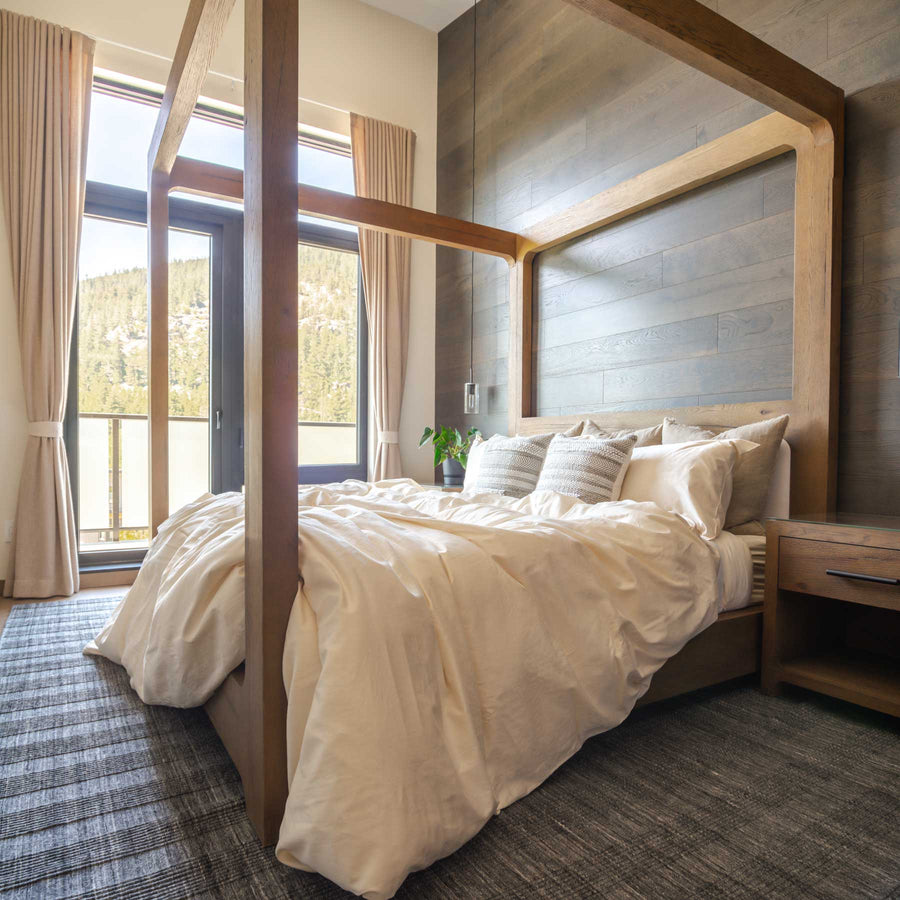Feathered Friends Blog
Winter is coming which means the door is open for many fantastic outdoor activities. If you’re just getting into winter sports it can be a bit intimidating to plan your adventure, so here is a basic list of items that will make you much more comfortable and safe along the way!
Words and Pictures by Meghan Young. Meghan is an avid outdoorswoman from Washington and a founder of the Pacific Northwest Outdoor Women’s Group. You can follow her adventures on instagram @missmeghanyoung.
Ten Essentials
The ten essentials are a must-have for backcountry travel during any season. In the winter this list becomes even more important due to the more severe temperature ranges. Online you will find a few versions of the list, but I like the one created by our friends at The Mountaineers the best.
1. Navigation (map and compass)
2. Sun Protection (sunscreen, hat, sunglasses, and clothing)
3. Insulation (always bring a variety of layers)
4. Illumination (headlamp/ flashlight AND extra batteries)
5. First aid supplies
6. Fire (butane lighter and waterproof matches)
7. Repair kit and tools
8. Nutrition (extra food for one additional day)
9. Hydration (extra water and a purification method)
10. Emergency shelter
Our Seattle store just received the new Suunto Spartan Ultra watches! Over the last week we sent one out in the field to gather some top-level beta on this new multisport GPS watch from Suunto. Keep your eyes out over the next few months for more in-depth reviews of specific features.
Over the last week I got to take Suunto’s Spartan Ultra HR on a few field tests. Here are my initial impressions. Keep your eyes out for subsequent follow-up reviews after I have gotten it on some backpacking trips, tracked data longer, and explored the upcoming software updates.
Out of the box
The Spartan looks and feels great. I got my hands on the All-black HR with the steel bezel, and it looks clean, sharp, and streamlined. In the box is a very simplified instruction manual, a connector cable, a HR monitor, and a sticker (I am a sucker for stickers).
Putting the watch on was a pleasant surprise. The first thing I noticed was how light it felt. As a woman with quite small wrists, I have tried on most GPS watches on the market and disliked the feel of all of them. All of them looked huge on me and would not wrap properly around my wrist; at best they would flop around when I ran, and worst would press on my lower arm bone quite uncomfortably. While the Spartan does look big on me, it is actually comfortable for a long day of hiking. A big part of the comfort for me is the slightly curved back face of the watch and the siliconized straps that hold the watch in place without having to be tightened uncomfortably.
While the watch is likely too big to be my all-day every-day wearer, I can easily see it meeting this need for someone with larger wrists or someone who is used to a larger device.
Looking for some ideas on ways to enjoy the first few weeks of fall? Our friends at the Washington Trails Association created this great article with ideas on what to do with your kids in our Washington. This blog post was originally published on WTA’s Signpost blog, which is a fantastic resource for hikers and families looking to plan their next trip.
Every Kid in a Park is a national initiative started last spring that connects fourth graders and their families with the trails, wildlife, resources, and history on federal public lands for free in 2016.
Many fourth graders have already received their passes, and there is still plenty of time left for your next big outing. Your pass is good in all six of Washington’s National Forests, as well as the National Parks. Not all trailheads on National Forests require a pass, but if you’re not sure, it’s always good to have it displayed just in case.
All of these places have fantastic family adventure options. Take a look at our suggestions below, or search our hiking guide to make your own adventure.
Part two is a smorgasbord of advice from the Feathered Friends staff on simple ways to maximize the fun while on a backpacking (or camping) adventure.

1. Bring “Sacred Socks”
Our feet take a beating on hikes (especially backpacking trips) when we wear the same pairs of socks for hours or days on end. While some feet (and noses) don’t mind, others do not take kindly to the abuse and complain. Our solution; bring a pair of clean “sacred socks” that are only worn in the tent. Not only does this keep your bag clean and fresh, but it also gives you the opportunity to rinse the salt and dirt from your hiking pair to prevent salt rash and unhappy feet.
2. Don’t skimp on your sleeping pad
Campsite comfort matters. After a long day of hiking there is nothing better than sitting down for a good meal and then crawling into a cozy tent and sleeping bag. Sadly, too often people forget about their sleeping pad and end up tossing and turning all night trying to find a comfortable position.
For some people the simple foam layer will work well, but we are big fans of inflatable sleeping pads like those made by Therm-a-Rest, Exped, and Sea-to-Summit. While a little more expensive to get a high quality one, when taken good care of these pads can last a long time. They are also not only more comfortable, but also quite a bit warmer in cold conditions.
Planning for Mount Rainier isn’t just about gear, food, people, and conditions; we also have to think about permits.
Summertime within Mt. Rainier National Park is truly stunning – from lowland forested trails to the massively glaciated alpine – it offers exceptional recreational opportunities. Being so close to Seattle, however, things get a little complicated if you are looking to experience the beauty by exploring the high mountain or staying overnight.











